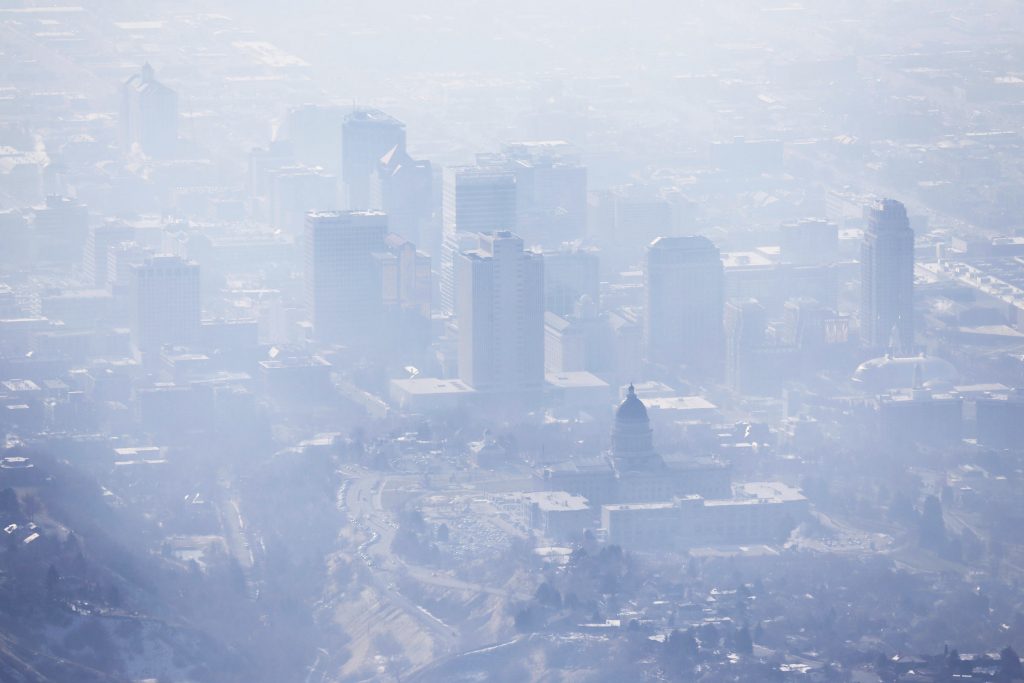Provo air quality on the up and up, report shows – The Daily Universe
Provo air quality on the up and up, report shows - The Daily Universe Universe.byu.edu


Provo’s Improved Air Quality and Sustainable Development Goals

Provo may soon be designated as having improved air quality since meeting the Environmental Protection Agency’s requirements for harmful particulate matter in the air in 2019.
Particulate Matter and Air Quality
- Particulate matter smaller than 2.5 microns, or about 30 times smaller than the width of a human hair, are emitted by sources such as engines and wood-fired stoves, according to the Utah Division of Air Quality 2023 Annual Report.
- These particles can harm lungs and are what cause temperature inversion to take on a brown tint in the winter.
Inversion is caused when warm air close to the ground and cold air higher in the atmosphere flip places, causing cold air to be trapped underneath a “lid” of warm air. These conditions reduce the natural mixing of cold and warm air, ensuring pollutants such as particulate matter stay lower, causing unhealthy air quality, according to the Utah Division of Air Quality.
“These particles are so small that they can become embedded in human lung tissue, exacerbating respiratory diseases and cardiovascular problems,” the DAQ report said.
In addition to trapping human-emitted particles and leading to a buildup, the inversion provides ideal circumstances for gases such as sulfur dioxide and ammonia to mix, becoming particulate matter, according to the report.
Provo’s Air Quality Improvement Efforts
- Provo, along with Salt Lake City and Logan, were classified by the EPA as not attaining particulate matter requirements in 2006. In 2015, Provo and Salt Lake City failed additional requirements, resulting in the areas being classified as “serious nonattainment,” according to the report.
- These factors have resulted in Northern Utah, and especially Provo, historically having poor air quality, according to Ned Hill, a board member on the Provo Sustainability and Natural Resources committee.
“The federal government was looking at the air quality in Utah … and they said, essentially, you got to clean up your air or we will withhold money to redo your freeways,” Hill said.
Along with the committee, Hill has worked with Provo Power, BYU and the Utah Valley Chamber of Commerce to promote initiatives designed to reduce emissions and improve air quality.
- These efforts include a rebate program designed to make purchasing electric tools and appliances cheaper when disposing of gas-powered equipment.
- Provo Power has also worked to provide clean energy.
Through these efforts, Provo has met EPA requirements for particulate matter found in the atmosphere since 2019, according to Bryce Bird, director of the Utah Division of Air Quality.
Sustainable Development Goals and Future Outlook
“As we’re making progress, it’s clear that air quality is better today than it was 10 years ago, 20 … 30 years ago, 40 years ago in Utah County and throughout the state,” Bird said. “The largest source of air pollution is us, and so looking at new technologies, new ways to do things is certainly the best way to keep the air quality so it’s not impacting public health in the future, despite the (population) growth.”
The EPA has not yet designated Provo as having attained particulate matter standards, but, according to the DAQ 2023 report, it is expected soon. Provo has met all requirements given by the EPA for several years.
SDGs, Targets, and Indicators
| SDGs | Targets | Indicators |
|---|---|---|
| SDG 3: Good Health and Well-being | Target 3.9: By 2030, substantially reduce the number of deaths and illnesses from hazardous chemicals and air, water, and soil pollution and contamination. | Indicator: Reduction in harmful particulate matter in the air. |
| SDG 11: Sustainable Cities and Communities | Target 11.6: By 2030, reduce the adverse per capita environmental impact of cities, including by paying special attention to air quality and municipal and other waste management. | Indicator: Improvement in air quality in Provo. |
1. Which SDGs are addressed or connected to the issues highlighted in the article?
SDG 3: Good Health and Well-being
The issue of air pollution and its impact on human health is connected to SDG 3, which aims to ensure good health and well-being for all.
SDG 11: Sustainable Cities and Communities
The issue of air pollution in Provo is also connected to SDG 11, which focuses on creating sustainable cities and communities.
2. What specific targets under those SDGs can be identified based on the article’s content?
Target 3.9: By 2030, substantially reduce the number of deaths and illnesses from hazardous chemicals and air, water, and soil pollution and contamination.
The article highlights the harmful effects of particulate matter in the air and the efforts to improve air quality in Provo, which aligns with Target 3.9.
Target 11.6: By 2030, reduce the adverse per capita environmental impact of cities, including by paying special attention to air quality and municipal and other waste management.
The article discusses the efforts made by Provo, including initiatives to reduce emissions and improve air quality, which align with Target 11.6.
3. Are there any indicators mentioned or implied in the article that can be used to measure progress towards the identified targets?
Yes, the article mentions the reduction in harmful particulate matter in the air as an indicator of progress towards improving air quality in Provo. This aligns with Target 3.9 under SDG 3.
The article also implies that the improvement in air quality in Provo can be used as an indicator of progress towards Target 11.6 under SDG 11.
Behold! This splendid article springs forth from the wellspring of knowledge, shaped by a wondrous proprietary AI technology that delved into a vast ocean of data, illuminating the path towards the Sustainable Development Goals. Remember that all rights are reserved by SDG Investors LLC, empowering us to champion progress together.
Source: universe.byu.edu

Join us, as fellow seekers of change, on a transformative journey at https://sdgtalks.ai/welcome, where you can become a member and actively contribute to shaping a brighter future.







